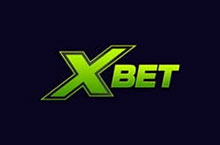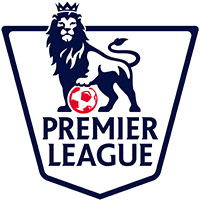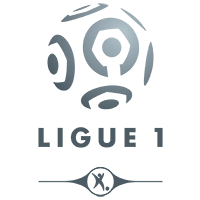Nowadays, it is easier than ever to back your favourite sports team or athlete by placing a bet in their favor. You don’t have to leave your home and search for the nearest betting retailer. Basically, the only things you’ll need to place your bet, are a computer and an Internet connection. Furthermore, the advent of mobile technologies allows for bets to be placed via portable devices. You don’t even have to be at home to bet.
In addition, online bookmakers offer more sports markets than betting retailers. There are literally hundreds of markets online, the odds are also quite competitive. Besides, web-based bookmakers accept all kinds of bets – straight, teasers, futures, props, handicaps. Wagering on games in progress is also possible as most betting platforms have a separate section for In-Play bets.
Find the best bookmakers here
The latter are especially appealing as they allow for a better assessment of the game’s outcome, which naturally will increase one’s chances of placing a winning bet. Then again, multiple bets are yet another option. Seasoned punters aim at predicting the outcome of several selections. Such bets are called parlays or accumulators and consist of two to twelve selections usually.
Over/Under bets are among punters’ favourites and their popularity continues to grow. This might have something to do with the fact such predictions are easier to make. To better understand why, keep on reading.
What is an Over/Under Bet?
Those of you who are new to sports betting and have placed straight bets only are probably unfamiliar with the Over/Under type of bet. So it would be best to explain what exactly an Over/Under wager is. To put it simply, this type of bet is centered around the total number of goals/points, the teams score in the course of a game. That is why in many cases, Over/Under bets are referred to as “Total bets”. This is probably one of the most straightforward types of bets.
Basically, a bookmaker would set the total score of the two competing teams. Often the teams’ score is combined, but not always. The punters bet on whether or not the actual number of goals, scored in the match, will be lower or higher than the number, predicted by the bookmaker. Let’s demonstrate this with an NFL example. In a hypothetical situation, the New York Jets are playing against the Baltimore Ravens. The bookmakers decide to set the Over-Under score for the game at 43.0. Punters are obviously faced with two options: they can bet that the combined score will be more or less than 43.0; and, if, at the end of the game, the combined score turns out to be 46.0, those who have placed their bet on “under”, will lose their money.
Over/Under bets are usually made with combined scores, but there are other options, as well. It largely depends on which sport you are betting at. Bets can be placed on the total number of goals or points a team scores in the course of the game. Statistics in baseball include the total number of a player’s (or a team’s) home runs or runs batted in. In basketball, for example, Over/Under bets can be placed on a player’s/team’s total number of steals, assists, blocks, and turnovers. As you can see, there are numerous options.
One option, however, is completely out of the question. The draw is an impossible outcome with this type of a wager. Let’s demonstrate this with yet another example. This time, we’ll assume Manchester United and AC Milan are playing. The bookmaker has determined the total number of goals to be 3.5. Those of you who place an Under bet will win only if the teams score one or two goals. Respectively, if no goal is netted at all, Under bets will win again. On the other hand, punters, who have placed Over bets will win only if the teams score more than three goals. A draw won’t do. With Over/Under bets you either win or lose, there’s no in-between option. Your chances of winning and losing appear to be equal. Please note, extra-time goals and penalty shoot outs do not count in Over/Under bets.
Over/Under Bet Placing
We’ve already mentioned some of the sports, Over/Under bets can be placed at. Now let’s dwell on this subject some more. Over/Under bets are predominantly placed on sports which are based on goals or points scoring. These include baseball, basketball, American football, cricket, tennis and of course, soccer. The latter is the most popular sport to place Over/Under bets at.
Without any doubt, the most common Over/Under market for soccer is the Goal market. In this case, punters are expected to predict whether or not a team will score more or fewer goals than the number, set by the bookmaker. Of course, placing an Over/Under bet on the total number of goals is also possible. On numerous occasions, such wagers can be placed on games which are still in play. As the action literally unfolds before your very eyes, it would be much easier for you to predict whether or not more or fewer goals will be netted. Those of you, who are new to sports betting should probably first bet on the Goals market.
Things are not much different in basketball. Most punters are predominantly focused on one statistic – namely how many points will be scored by both teams before the game ends. However, Over/Under bets can be placed on how many points will be scored in each quarter or half. The other option is betting on how many points each team will score.
The following is an example of an Over/Under bet, placed on a game between the LA Lakers and the Cleveland Cavaliers. The line is set in the following way: o-115 for the Lakers and u+110 for the Cavaliers. The total number of points for both teams is set by the bookmaker at 193. If the Cavaliers emerge as winners and score 95 points, while the Lakers collect only 93 points, the total number of points will be equal to 188. Those who bet Over in this game will lose, while wagers for Under will win. But if the game’s result is 99 to 95, the combined score will be 194 and it will be the other way around. Punters with Over bets will emerge as winners. In case the game ends with a combined score of 193, this will be considered a push and the amount you’ve wagered will be returned to you. To eliminate the possibility of a push, bookmakers tend to add half a point to the total score, like this – 193.5. This way, all Over/Under bets will be either losing or winning ones.
Over/Under bets are often placed on less conventional games, such as cricket. Again, bets can be placed on whether the final result of the cricket match will be over or under a given number. Another option is betting on the number of runs a batsman will score in the first inning. Now, let’s assume the line is set in the following way:
20
Over 1.80
Under 1.80
Those of you, who bet on Over and emerge as winners, will collect $0.80 for each dollar they’ve wagered, in addition to their initial bet. This makes for a total of $1.80 profit. Depending on the number of punters on each side of the Over/Under market, the bookmakers may attempt to balance things in their favor. Typically, this is achieved by adjusting the odds. The modified market will look like this:
20
Over 1.70
Under 2.00
This way, punters who have bet on Over will collect $0.70 profit for every dollar they place. Those who bet on the Under market won’t have any net profit whatsoever, as they will earn $1 for every dollar they wager.
Things are not much different with Over/Under bets placed at NFL games. Typically, the away team’s name is listed first, so the Over/Under market will look like this:
New Orleans Saints
over/under 35.5
Buffalo Bills
As was explained, the decimal’s presence is by no means a coincidence. The 0.5 point was added to the total score on purpose, in order to eliminate the possibility of a push. The punters who bet on Under will win if the clash ends at 24 points. Over bets, on the contrary, will win in case the game’s total score is at least 36. There’s no way in between.
Baseball, on the other hand, is centered around scoring a specific number of runs. In this case, Over/Under bets are based on the total number of runs, scored by the competing teams. A run is scored, when a baseball player advances towards the first, second and third bases and manages to return to his home plate. He is supposed to touch the bases in this exact order before three outs are recorded.
Now, let’s consider the following example. The total score for the game is set at 8.5. The Red Sox and the Yankees are playing. The moneyline for Over bets is set at -110, while that for Under bets is +130. If the outcome of the game is 4:3 for the Red Sox, the number of total runs will be equal to 7. Therefore, those of you, who placed Under bets will win, the others will lose. However, if the game ends in 5:4, the total score will be 9, so it would be the other way around – punters with Over bets will collect the winnings. Those, who place the Over bets will have to wager $110 to win $100. The others, who bet on Under will pay $130 to collect $100 net profit.
Tips for Betting Over/Under
At first glance, Over/Under bets appear to be pretty straightforward and to a great extent they are. This, however, doesn’t mean each single bet you place on such markets will be a winning one. But don’t be too quick to get discouraged – there is always a way to tip the scales in your favor. Over/Under bets come with a number of advantages. First of all, there is no need to predict who the winner will be. You can simply place an Over/Under bet and still win, even if the team you’re backing is defeated.
The most common Over/Under market for soccer is set at a total score of 2.5, which means if there are three or more goals, Over bets will win. If the teams score less that two goals, the Under bets will generate profits for those, who placed them. Other popular Over markets include Over 0.5 and 1.5. These are much easier to win as rarely teams fail to score any goals in the course of a game. If you are a beginner, it is advisable to place your first Over/Under bets at one of those markets. Bear in mind, the odds for the 2.5 Goal market are much more appealing and have a better strike rate. Of course, some bookmakers offer higher total scores for the Over markets, but these usually tend to collect a larger-than-average commission.
If you’re a beginner, start with Over bets. It is much easier to determine which team will score more goals. Similarly, it is easier to decide which players are more likely to score.
One thing that inexperienced punters need to take into consideration is their actions influence the odds and the markets. Most recreational bettors tend to bet on the Over. This tendency can be explained by the fact, sports fans love to see goals being scored. Unfortunately, this pattern of placing bets only on the Over market has a profound effect on line movement. To balance things out, bookmakers will quickly adjust the odds in accordance with bettors’ behavior. If you want to bet on Over nevertheless, make sure you place your bet in the beginning of the week, before the odds are modified. Earlier in the week, the total score for Over is typically lower and you can greatly benefit from this fact. In case you’re leaning towards placing an Under bet, it’s advisable to wait a while. Place your bet shortly before the game starts – at this point the total score will have reached its peak.
Another good idea is to keep track of how things change throughout the week. Observe how the line moves on a daily basis. Odds are constantly adjusted because bookmakers want to make sure the two sides in a sports event receive relatively equal betting action. Besides, checking the odds and the line movement is not difficult at all – you simply need a computer or a mobile phone and an Internet connection. You can simply browse through different bookmakers’ websites and see how the odds have evolved.
Keeping track of the teams’ recent performance is also of crucial importance. But there’s something else to consider – just because a team has performed well in the past few weeks, it doesn’t mean they will score more goals than their opponents. You need to see the big picture. In order to assess properly an upcoming game’s outcome, you need to consider the teams’ last 20 matches.
Bettors are not the only ones who influence the market. Other factors may have a considerable impact as well. Over/Under markets can change dramatically when key players suffer an injury or are benched. It makes sense that if a key goal scorer is out, his team may end up netting fewer goals. The weather conditions also play a significant role – if it’s pouring steadily, the teams are less likely to score many goals.
Statistics are of extreme importance, especially when it comes to NFL games. Make sure you visit specialized sports websites, where you can read the latest offensive and defensive rankings and statistics. Before you place your Over/Under bet, consider how many first downs, rushing attempts and passing attempts a team has made. In American football, a team’s advance per rush also plays a role.




 Premier League
Premier League La Liga
La Liga Bundesliga
Bundesliga Serie A
Serie A Ligue 1
Ligue 1 UCL
UCL